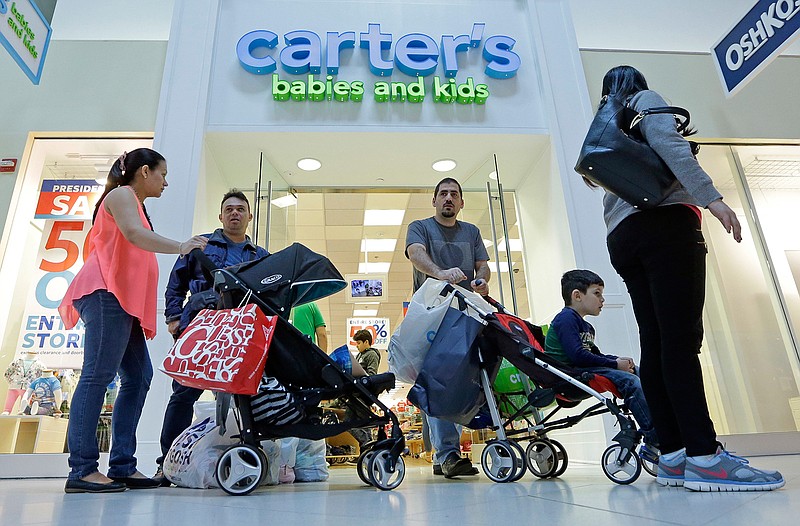WASHINGTON - After a long period of plodding economic growth, significant earnings gains over the last two years have finally enabled the average American household to surpass the peak income level it reached in 1999.
The median household income in the U.S. climbed to $59,039 last year, up 3.2 percent from 2015 after adjusting for inflation, the Census Bureau reported Tuesday.
That comes on the heels of a 5.2 percent jump in income in 2015, the highest annual percentage increase on record.
The back-to-back increases brought the median income - in which half of households earn more and half less - above the previous peak of $58,665 in 1999.
The national measure of poor people in the U.S. also improved significantly for the second year in a row: The poverty rate fell last year to 12.7 percent, from 13.5 percent in 2015 and 14.8 percent in 2014.
That translates into a decline of about 6 million people in poverty over the last two years.
The latest poverty rate is comparable to 2007, the year before the Great Recession took hold. But there were still 40.6 million poor people in the nation last year. A household with two adults and two children was considered poor if their total annual income was less than $24,339.
"We consider 2015 and 2016 to be the turning point on the real median household income front, as employment and wage gains, combined with modest consumer price inflation, have boosted the well-being of many American households," said Chris G. Christopher Jr., executive director of IHS Markit, an economic research firm.
"Real median household income has finally completed its nine-year slog of digging out of the ditch," he said.
But the annual census report was not as glowing beneath the surface, and economists are concerned that budget proposals curtailing things such as food stamps could thwart continuing progress.
The effect of Trump's promised tax reform could also change trends for the poor and middle class.
Although the latest data showed solid gains for blacks and Latinos and younger adults, median incomes for full-time, year-round workers, men and women, were essentially flat in 2016, reflecting sluggish wage growth that has persisted into this year.
What's more, a key measure of income disparity remains at the highest level in at least half a century.
And although the median income for urban dwellers jumped 5.4 percent last year to $61,521, households in rural areas saw their earnings basically stagnate at less than $46,000.
"In some ways, that, in particular, was the story of the 2016 election," said Harry Holzer, a Georgetown University public policy professor, noting the large support Donald Trump drew from disaffected rural voters.
"The major cities are thriving. They have strong growth and highly educated people who are doing particularly well," he said. The census report "emphasizes this divide that has become very apparent in America."
Still, the latest improvement in incomes and poverty was generally stronger than what some analysts were expecting. Though the economic recovery and recent wage gains have been sluggish by historical standards, the current period of growth is one of the longest on record, which has continued to lift the number of people employed.
There were 2.2 million more men and women working year-round and in full-time jobs last year than in 2015.
That in turn also has helped boost the percentage of people in the U.S. with health insurance, a separate but important measure of economic well-being.
The increased employment, coupled with changes brought by the Affordable Care Act under President Obama, has sharply lowered the ranks of Americans without medical coverage in recent years.
The Census Bureau said Tuesday that 8.8 percent of people in the U.S. went without health insurance in 2016 for the entire year. That compares with an uninsured rate of 9.1 percent in 2015 and 13.3 percent in 2013. The Affordable Care Act, also known as Obamacare, had its first full year of effect in 2014.
Census officials cautioned that median income figures since 2013 are difficult to compare directly with previous years because of a change in how the Census Bureau collects income data. But other economic research indicates that median household income is now at an all-time high - and still growing.
"We see a continued upward trend for 2017," said Gordon Green, a former Census Bureau chief of income and poverty statistics. His firm, Sentier Research, which tracks economic data from monthly census statistics, said that by his analysis, the median income in the U.S. this spring surpassed the previous high.
Whether the gains and the rate of growth continue will depend on future economic growth and government policies.
"Beyond this year, it's hard to predict," Holzer said. "A lot depends on when the next downturn is coming."

